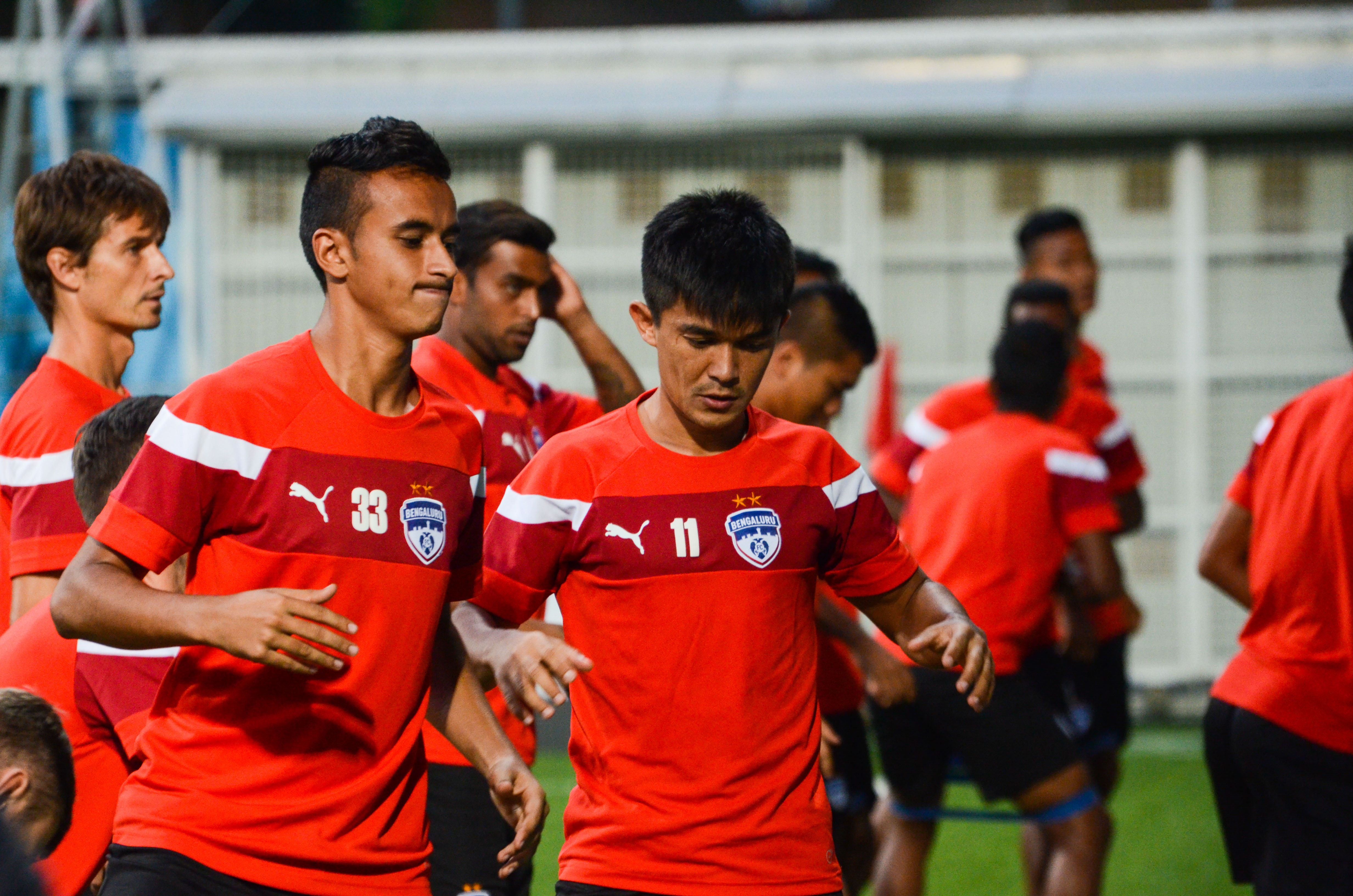AFC Cup | Bengaluru FC's win means much more for Indian football than a semis spot
Bengaluru FC, the reigning I-League champions, replicated Dempo and East Bengal's success in the AFC Cup by becoming the third Indian team to book a place in the semis. Can they have a similar impact, though?

Eight years back, Dempo's historic win over Home United in a thrilling encounter marked a memorable period for Indian football—and only a handful of those have arrived in recent times. Dempo succeeded where East Bengal and Mahindra United had failed to before
The spine of that Dempo team consisted of the likes of Mahesh Gawli, one of the best defenders to have played for India in the last decade, Samir Naik, who is still playing for the club at the age of 37, Clifford Miranda, Climax Lawrence, and two of the best foreigners to ever play in the I-League—Beto and Ranty Martins. That remains one of the best collection of players in Indian club football in the recent past, and many rate them as the best team to have played in the I-League's history.
“You’ll not see a time like that ever again in Indian football. Never,” Beto said in an interview to Indian Express while remembering that team.
The spine of that Dempo squad was also embedded in the Indian national team, and they went on to win the AFC Challenge Cup – their biggest success since the Asian Games gold in 1962. The U23 team went on to win the SAFF Championship, in what turned out to be a momentous year for Indian football.
In an ideal scenario, that is how club football is meant to work. A club's success leads to the success of the national team. Most recently, Barcelona's success led to Spain winning the World Cup, while Bayern Munich's success helped Germany win the World Cup. The common factor in these two stories is that the spine of the club's first team was successfully transferred to that of the national team's squad. Back in 2008, Dempo, who won the inaugural I-League that season, had the same impact.
Last night, Bengaluru FC, the reigning I-League champions, replicated Dempo's success in the AFC Cup by becoming the third Indian team to book a place in the semis. Can they have a similar impact, though?
It might seem a bit preposterous to compare a club established 55 years ago with a club which came into existence three years back. However, there are a lot of similar traits—apart from their exploits in Asia's second-tier club competition. Dempo, alongside Churchill Brothers and Salgaocar, released Indian football from the stranglehold of the Kolkata clubs, and now Bengaluru FC
Dempo redefined the way the clubs were being managed, and the type of football that was on display on the field. At a time when clubs were splurging on foreign players and making regular changes to their squads, Dempo's greatest strength was their stability. Between 2005 and 2011, they had retained almost the same squad, and they had won five league titles (2 National Football League titles and 3 I-League crowns), one Durand Cup, two Indian Super Cup, and the historic appearance in the AFC Cup semifinal.
Like Dempo back then, Bengaluru FC
From chants to banners to open-top bus celebrations—Bengaluru FC have given the other clubs a blueprint to follow.
What helped? The fact that the who's who of its management does not belong to the 70s and 80s. The fact that the club knew how to use social media to rope in the fans. A club which made sure that its players held interactive sessions. It invited fans to attend open training sessions. It created a sense of belonging for the fans. They made sure that the fans are not just 'visitors' when they attended a game in the stadium. From chants to banners to open-top bus celebrations—Bengaluru FC have given the other clubs a blueprint to follow.
However, Dempo and Bengaluru's successes arrived at contrasting times in Indian football. Dempo's AFC Cup semifinal appearance came at a time when the I-League was inaugurated, and there was a sense of optimism around Indian football. The National Football League did not work, but the I-League was expected to—at least commercially. When Dempo took on Salgaocar in the first ever I-League match on November 24, 2007, it was expected to be the dawn of a new era in Indian football. Nine years later, the league is battling for a survival—a battle which it is losing horrendously.
The ISL is the new boy in the town, whom everyone adores, even as the I-League is heading towards foster care. Iconic clubs are shutting down operations and pulling out of the league like there is no tomorrow, and now there are even doubts whether there will be enough teams for the I-League to continue functioning. In a time like this, it is difficult to foretell what Bengaluru's success would mean for Indian football in the long run.
Worst case scenario? It becomes the footnote to a season when Indian football unraveled completely.
The best case scenario is that it might remind the AIFF what the I-League clubs can achieve given the proper attention. That one does not need to turn football into a Stardust Awards function to be successful where it actually matters. That the I-League clubs deserve a place in the top tier of Indian football, and not to be treated like used socks.
Worst case scenario? It becomes the footnote to a season when Indian football unraveled completely.
What is easier to foretell, though, is the fact that it will be a memorable night in Bengaluru when defending champions Johor Darul Ta'zim of Malaysia come to town to play the second leg of their semifinal tie on October 19. On paper, Bengaluru

Comments
Sign up or log in to your account to leave comments and reactions
0 Comments